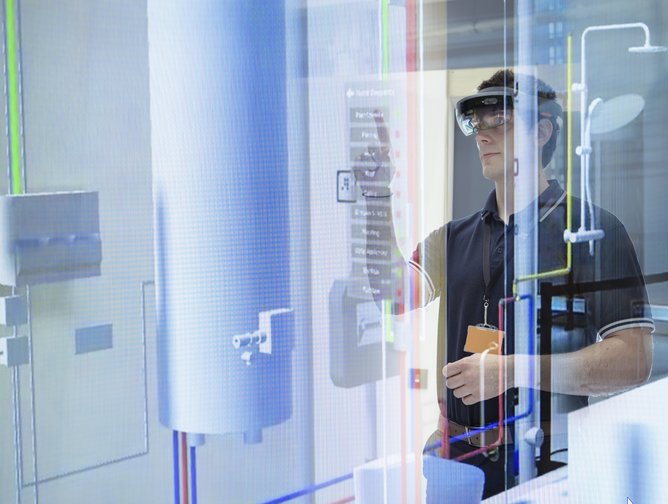As a global IT services and solutions leader, Atos has experience in digital transformation across the world. Its offerings are tailored to the areas in which they are offered, a function performed in Asia Pacific by Uli Braun, CTO for the region. Braun’s role sees him lead several complementary departments in the Asia Pacific region. “As CTO, I’m leading portfolio and pre-sales for Asia Pacific and I’m also in charge of analyst relationships in the region. Basically, we take our global portfolio, apply it to the Asia-Pacific market and make it work in a local context.” It’s a region that brings its own unique set of challenges and possibilities, as Braun explains. “There's two key challenges. Firstly, more than any other, Asia-Pacific is large, complicated and extremely diverse. Adapting to the economic and cultural diversity is a real challenge. Secondly, there are low cost markets where it can be very difficult to obtain the prices that we must charge in a global context for leading edge technology solutions. As a result, we deal mostly with multinational corporations.”
The service that Atos offers goes beyond a simple hands-off IT transaction. “It’s a business conversation,” says Braun. “We need to first understand the customer's business, and then match the IT challenges that they face with a solution that we as a company can offer them.” In Braun’s experience, some of the biggest difficulties clients are running into stem from legacy systems. “In this region it’s most likely the biggest challenge of all, because it prevents IT departments from becoming more agile and business-focused. That legacy burden is very heavy, and it's very difficult to fix for companies that are operating systems dating back to the 1980s or 90s.” Coming hand in hand with outdated systems can be legacy ways-of-thinking. “It's not just a question of infrastructure. It holds back the entire business transformation, because the case is made that ‘we have always been doing it this way, it has always worked, so why should we change to something else?’ That resistance to change can be quite significant, because many organisations are still very traditionally structured. Quite often the CIO reports to the CFO and IT is seen as a cost center rather than a business enabler. There's nobody who owns the digital agenda.”
Atos is well placed to solve such challenges. One of the premier solutions Atos can offer is in the cloud transformation. Whether implementing private, public or hybrid multi-cloud models, it’s a technology that can significantly increase agility while reducing capital expenditure. But Braun is clear that the case for cloud is far more comprehensive. “Cloud computing enables you to do things faster and with less of a time commitment. In the past you had to get the budget for a project and you were then stuck with it for five years because you had invested in hardware, software, whatever it may be. The cloud is not just infrastructure. Yes, it's storage and compute and memory and these kinds of things. But it's also APIs to tap into functions that you otherwise would have to build from scratch. Entire application systems can be deployed in minutes or hours, versus weeks or months in the past.”
The cloud also offers the attendant benefit of improving cybersecurity beyond the level that internal servers and data centres can provide. Of course, Atos also offers its own suite of cybersecurity products extending beyond this basic level of protection. “We are a large cybersecurity vendor with our own cybersecurity products. We have a business unit that produces secure phones, chip sets, security products, identity management systems, as well providing security monitoring services. My standard answer to a client who asks why they should come to Atos for cybersecurity is that we run the IT integration for the Olympic Games. It is one of the most visible events in the world and yet we have had zero security incidents since the partnership began.”
Data, meanwhile, is the lifeblood to many a modern organisation. Atos specialises in ensuring that maximum value can be created from the data clients have as well as the data they don’t. “Without data there there is nothing to generate additional business value from. Today, you don't have to own all the data anymore, because you can buy it and merge or blend it with the data that you have within your own company and then generate value from that. The value is not only in the data itself, it's in the combination of various data sources.” But data remains meaningless when not interrogated by the correct questions. Sometimes these questions are self-evident, but often they prove more elusive. “Sometimes we don't know the question. We can only find out what the question is by exploring the data. That's why it's complicated, and that's why you need the expertise companies like Atos bring to the table. Analyse the data, find the question, augment whatever is missing and then generate value from it – that’s the sequence.”
Atos always has an eye on the future of technology to ensure that what it is offering is future-proof. “There are two areas where most of the R&D spending goes. One is in cloud computing, and the other is in AI and machine learning technologies – that’s across the spectrum from hardware, such as IoT and edge devices, all the way to the software and application side. We also have a Quantum Learning Machine that lets you test and prepare the development of quantum algorithms on traditional hardware.” To ascertain the technologies of the future, Braun is part of a 150 member-strong scientific community at the company. Already such emerging technologies are being deployed in the real world, with Braun giving the example of deep learning being used for claims management in the healthcare sector or quantum algorithms that are used for the development and testing of new pharmaceuticals.
Ultimately, in a rapidly changing world, Atos is ensuring that its clients and itself are in positions where they can thrive in a safe, secure and sustainable environment. “We have a window of opportunity in the next two years to change the way we are doing things, and the skills our staff can offer to the market. We have about 110,000 employees worldwide, so it's no small task. We need to change to stay relevant in the market of the future, and we need to be more mature with our clients rather than just sitting there and waiting for them to tell us what they want us to do. We have a responsibility for the future of our cliemts business and we need to be partners on their journey into their digital future.”









